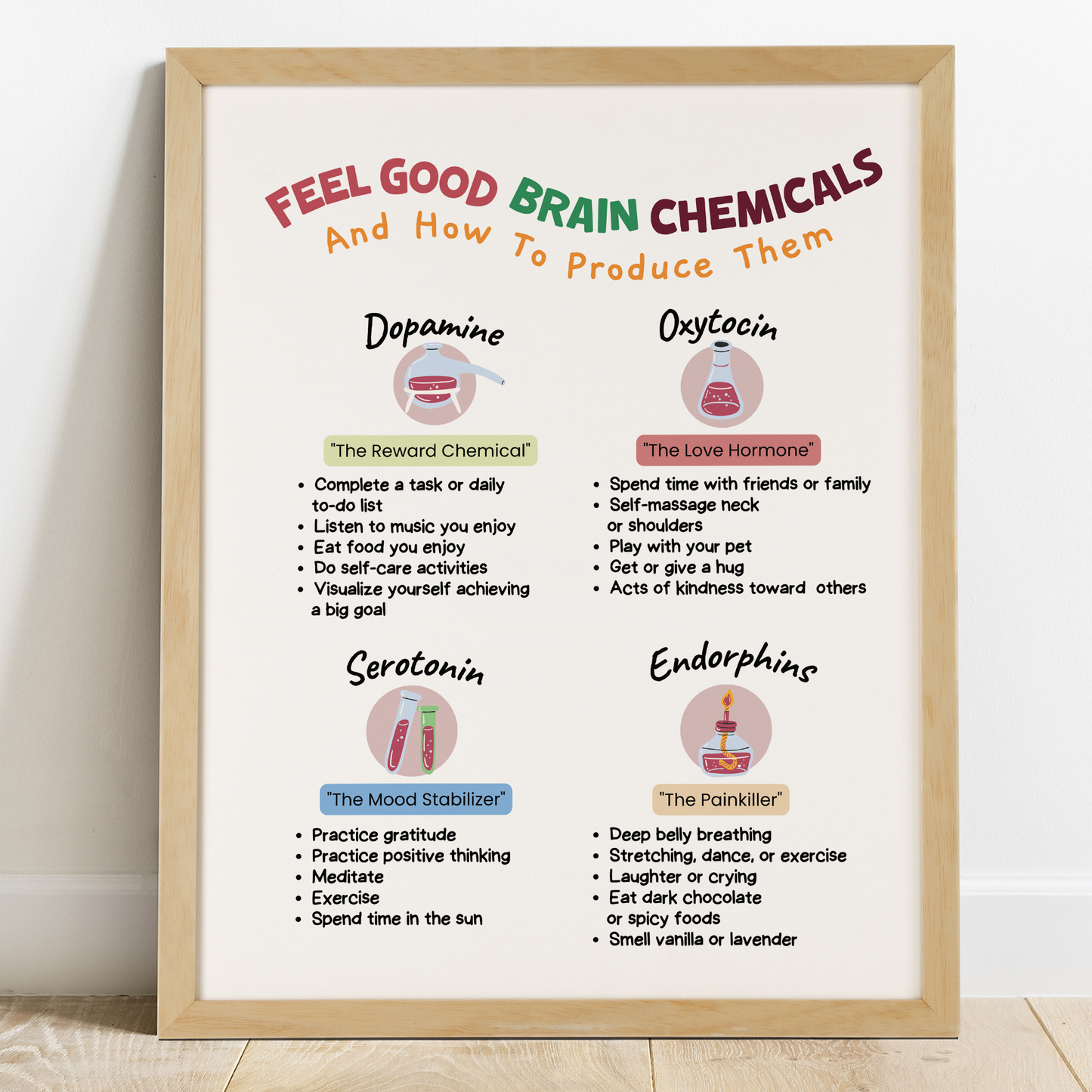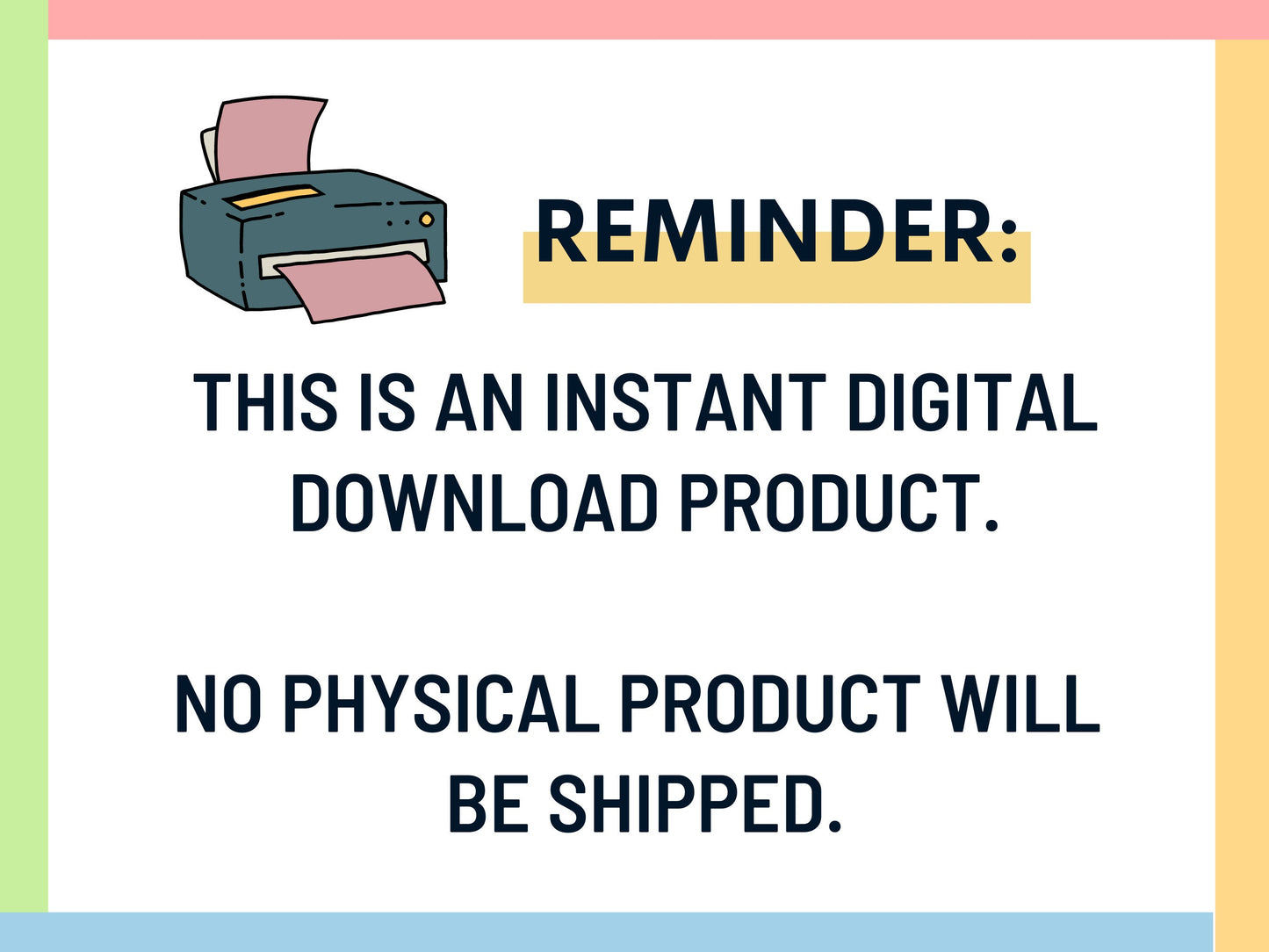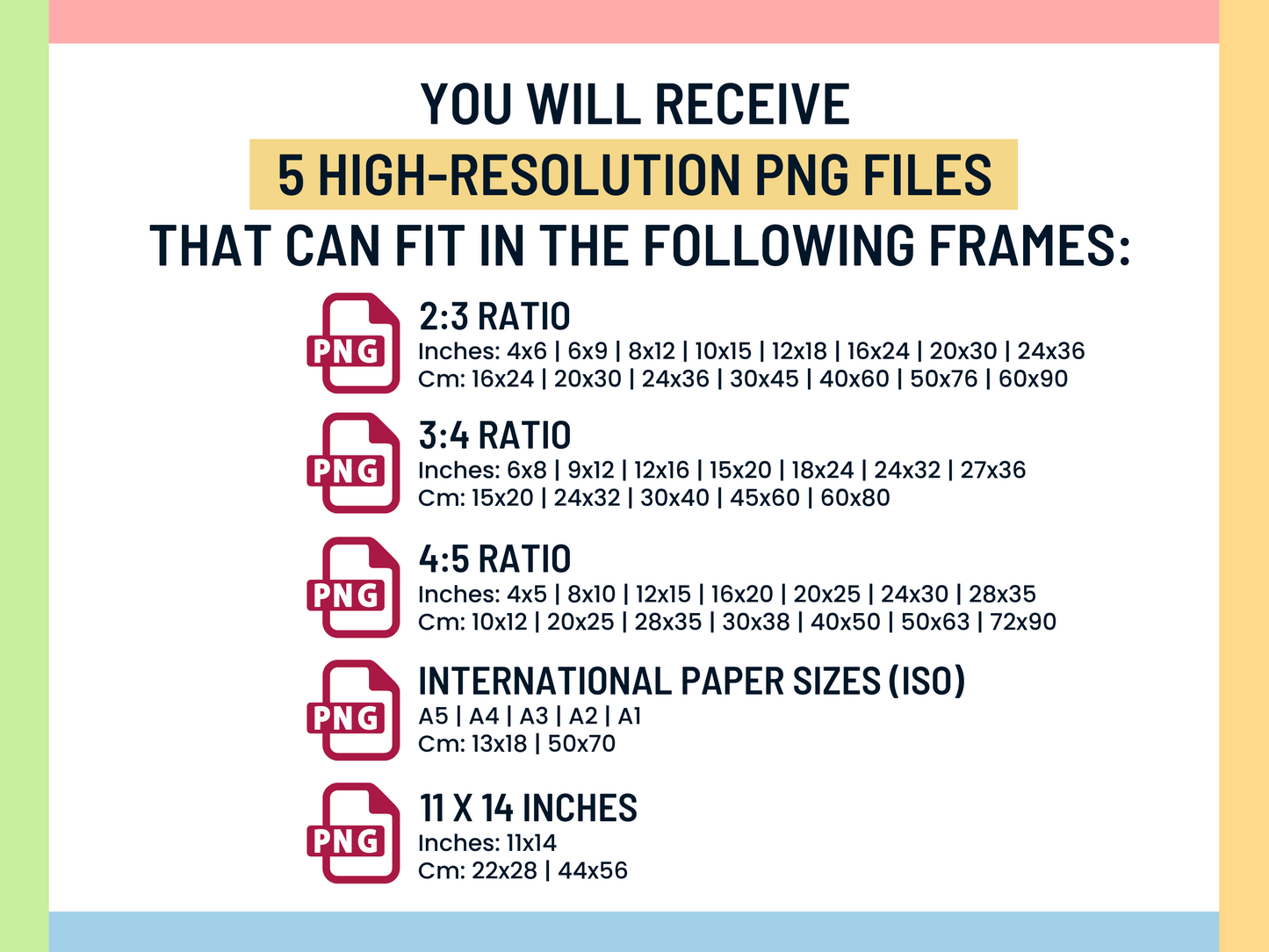Happiness Chemicals




Some clients struggle to understand why some activities make them feel good or how they can cope with stress effectively. Without this awareness, they might turn to unhealthy habits for happiness, which can lead to issues like low motivation and poor emotional regulation. Learning the science behind emotions is important, as it helps them manage their moods and make better choices.
The Happiness Chemicals poster shows the different brain chemicals that spark feelings of happiness. It covers four key happiness chemicals: serotonin, dopamine, oxytocin, and endorphins, and provides tips on how to produce them. This poster can serve as a daily reminder for clients to focus on thoughts and activities that make them feel good.
Learning the ways they can create happiness helps kids and teens prioritize their emotional health. Based on the information they gain, they can develop personalized routines for motivation and stress reduction.
With their routine in place, they can create a daily tracking sheet to log activities that boost their happiness chemicals and rank each one by its effectiveness.
We also offer a Science of Happiness handout that provides more information about this topic.
*This item is an instant digital download. A link to download your files will be emailed to you once payment is confirmed.
Want more resources like this? Check out our full catalog of therapy office decor.
References:
- Baixauli, E. (2017). Happiness: Role of dopamine and serotonin on mood and negative emotions. Emergency Medicine: Open Access, 07(02). https://doi.org/10.4172/2165-7548.1000350
- Burnett, D. (2018). The happy brain: The science of where happiness comes from, and why. Faber & Faber.
- Dfarhud, D., Malmir, M., & Khanahmadi, M. (2014). Happiness & health: The biological factors-systematic review article. Iranian Journal of Public Health, 43(11), 1468. https://www.ncbi.nlm.nih.gov
- Dsouza, J. M., Chakraborty, A., & Veigas, J. (2020). Biological connection to the feeling of happiness. Journal of Clinical and Diagnostic Research. https://doi.org/10.7860/jcdr/2020/45423.14092
- Instant Digital Download
- File: 5 High-Resolution (300dpi) PNG Files
- Size:
✔️2:3 ratio file for printing:
Inches: 4x6 | 6x9 | 8x12 | 10x15 | 12x18 | 16x24 | 20x30 | 24x36
Cm: 16x24 | 20x30 | 24x36 | 30x45 | 40x60 | 50x76 | 60x90
✔️ 3:4 ratio file for printing:
Inches: 6x8 | 9x12 | 12x16 | 15x20 | 18x24 | 24x32 | 27x36
Cm: 15x20 | 24x32 | 30x40 | 45x60 | 60x80
✔️ 4:5 ratio file for printing:
Inches: 4x5 | 8x10 | 11x14 | 12x15 | 16x20 | 20x25 | 28x35
Cm: 10x12 | 20x25 | 28x35 | 30x38 | 40x50 | 50x63 | 72x90
✔️ International Paper Sizes (ISO) file for printing:
A5 | A4 | A3 | A2 | A1
Cm: 13x18 | 50x70
✔️ Separate 11"x14" file
Inches: 11x14
Cm: 22x28 | 44x56





